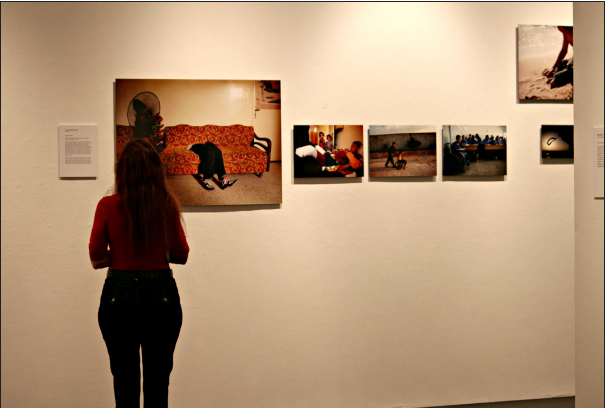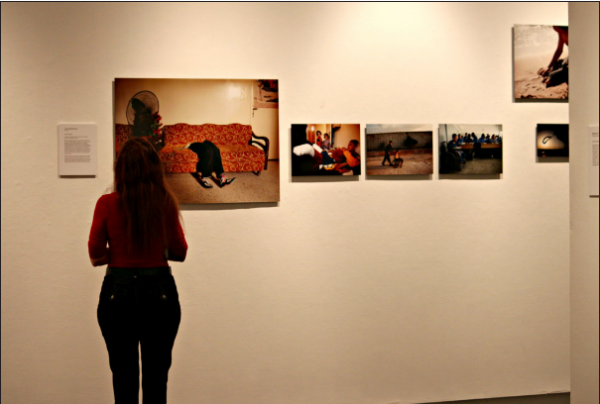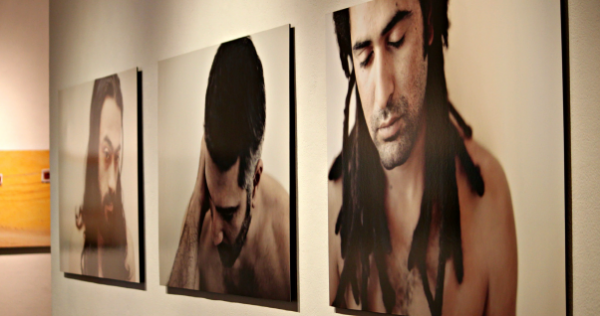

Rawiya documents the work and experiences of female photographers Myriam Abdelaziz, Tamara Abdul Hadi, Laura Boushnak, Tanya Habjouqa, Dalia Khamissy and Newsha Tavakolian from their journey through the Middle East.
There is a pair of legs dangling from a couch with a fan aimed towards a body, but a body is not there. A young girl dressed in pink with a matching bow in her hair poses for the camera with her American Bratz doll in hand.
“Rawiya” is Arabic for “she who tells a story,” which suits the collaborative collection of photographs taken by six women who share their experiences in the Middle East.
Women with photos of male members in their family are also just a part of the powerful displays at Rawiya Art Gallery
in the Ernest G. Welch building that is open through Nov. 16.Laura Boushnak, one of the six photographers, captures prosthetic legs dangling realistically from a couch without an owner. The common eye hardly notices a missing body for the legs.
Boushnak said the prosthetics belong to an 11-year-old boy named Mohammad, who was on a motorbike when it “drove over a cluster bomb in the last week of war in south Lebanon.” The photographs grasp the impact of the incident on Mohammad’s life; he had become Boushnak’s masterpiece.

Young Arab girls host an event called Jashne Taklif, which celebrates their acceptance of womanhood when they turn nine years old. Newsha Tavokolian captures girls after the ceremonies when they are required to wear Islamic headscarves and pray daily at schools.
In contrast, Tamera Abdul Hadi said she displays bold headshots of men in the Middle East to “uncover and break the stereotypes placed upon the Arab male.”
Cynthia Farnell, director of the Welch Gallery at Georgia State, introduced Rawiya to campus after becoming interested in Middle East photography after Arab events occurred in spring 2011.
“Women had such a visible and prominent role in those events. This exhibition is the result of a desire to have a deeper look at a very diverse region of the world,” said Farnell. Along one side of the gallery sat photos of women with grim expressions holding photos of men in the family who have gone missing.
Another photograph combines those same pictures on the wall alongside a bed in what looks to be a woman’s cluttered bedroom. Sometimes jewelry left behind is hung next to the frames on the wall.
“Dhalia Khamissy’s images of the belongings saved by the mothers of the missing in Lebanon are quite poignant,” Farnell said.
Headshots of Middle Eastern men are taken by Hadi to uncover and break the stereotypes placed upon the Arab male. Some faces seem to express a look of hope, while others hope to seek it, but a few of them simply have their eyes closed. Myriam Abdelaziz took pictures that embraced the Sun and said she favored pictures that showed “people whose skin have darkened filled with all that sun.”
“Today, more than ever, it is vitally important that students are familiar with that part of the world,” Farnell said. “I hope that the Rawiya project will help to build bridges between cultures through art.”
